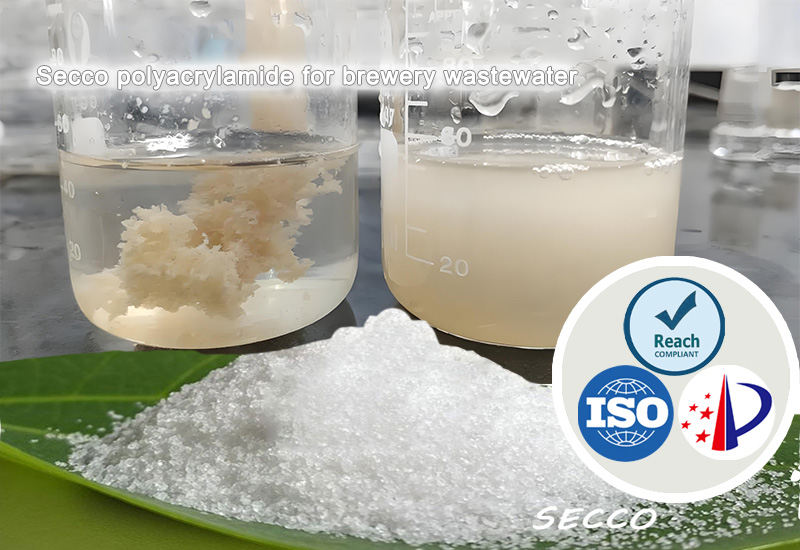In brewery wastewater treatment, the selection and application of polyacrylamide (PAM) significantly impact treatment efficiency and operational costs. Below is a detailed analysis of PAM selection and performance based on brewery wastewater characteristics.

1. Characteristics of Brewery Wastewater
High organic content: Rich in sugars, proteins, and starches (high COD/BOD).
Suspended solids (SS): Yeast residues, grain fibers, and colloidal particles.
Variable水质 (pH 4–6): Fluctuations due to brewing, fermentation, and cleaning processes.
High biodegradability: Suitable for biological treatment but requires pretreatment to reduce organic load.
2. Key Factors in PAM Selection
(1) Ionic Type Selection
Cationic PAM (CPAM)
Application: Sludge dewatering (e.g., after activated sludge process).
Function: Neutralizes negatively charged colloids, improves sludge settling, and reduces moisture content (to ≤80%).
Recommended: Medium-high charge density (60–80%), molecular weight (MW) 8–12 million.
Anionic PAM (APAM)
Application: Primary sedimentation (pretreatment for SS removal).
Function: Bridges suspended particles via adsorption, forming large flocs.
Recommended: Medium-high MW (10–15 million), 10–30% hydrolysis.
Non-ionic PAM (NPAM)
Application: Neutral or fluctuating pH conditions, or when metal ions are present.
Function: Relies on hydrogen bonding; often used with coagulants (e.g., PAC).
(2) Molecular Weight (MW) Selection
High SS wastewater: High MW (≥15 million) for better bridging.
Soluble organics: Lower MW PAM may assist coagulation.
(3) Dosage & Mixing
Dissolution: 0.1–0.3% solution with gentle stirring (avoid shear degradation).
Dosage: 1–10 ppm (determined via jar testing).
3. Treatment Performance Comparison
Parameter APAM (Pretreatment) CPAM (Sludge Dewatering)
COD Removal 30–50% (with PAC) Indirect (sludge thickening)
SS Removal 70–90% –
Sludge Cake Moisture – 75–80%
Settling Speed Significantly improved Enhanced compressibility
4. Key Considerations
Jar Testing: Essential due to wastewater variability.
pH Adjustment: Optimal PAM performance at pH 6–8 (lime may be needed for acidic wastewater).
Safety: Ensure acrylamide monomer content ≤0.05% (regulatory compliance).
Cost-Benefit: CPAM is more expensive but improves dewatering efficiency.
5. Typical Treatment Process
Flow: Screening → Equalization (pH adjustment) → PAC + APAM coagulation → UASB/Aerobic Process → CPAM sludge dewatering.
By selecting the appropriate PAM type, breweries can enhance wastewater treatability, improve sludge handling, and reduce disposal costs.
If you are interested in our products or have any questions, please fill in the form below. We will contact you immediately after receiving it. Thank you for your choice